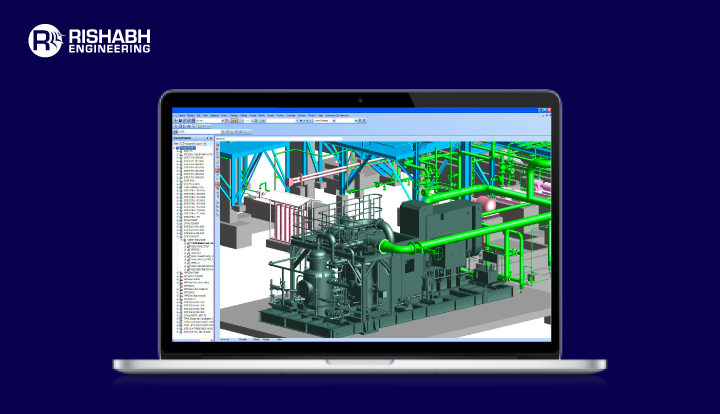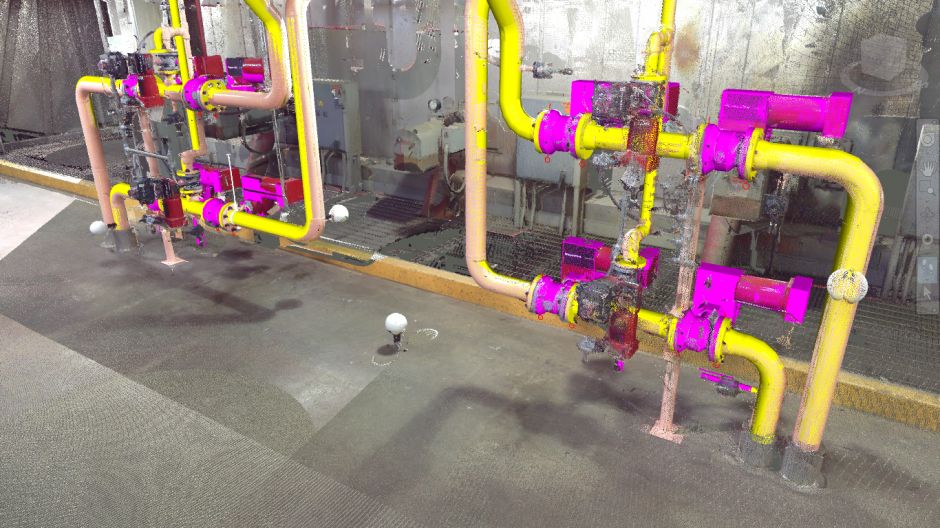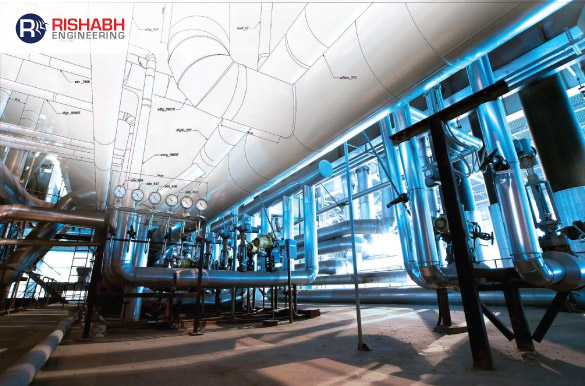
How Smart 3D Modeling Helps Add Value to Managing Aging Plants
An aging plant has typically been operating over several decades and is likely to have gone through significant changes. It would range from modifications to expansions and design changes. You would agree as the asset gets older several challenges inevitably arise. From over or under-maintained equipment to difficulties purchasing spare parts or changes in operating conditions that can lead to corrosion, erosion, mechanical damage, and even other late-life degraded failures.

The two prominent methodologies prevalent to address the aging issue of a plant unit comprises of;
1) Conventional Methodology:
Physical Information Capture: In the past, creating immersive smart 3D models of legacy plants required exhaustive manual surveying and then converting the information to achieve a truly impactful, usable model. It would require deputation of manpower to physically capture site data which may include current layouts and additional plant information.
- Process primary equipment and auxiliary components: Comprise of pressure vessels, columns, heat exchangers, storage tanks, open-top tanks pipework/static elements, pipework, and pipework fittings such as valves, strainers, flanges, and ejectors, etc.
- Process secondary equipment: Comprises rotating / motive elements example – pumps, ,turbines, agitators, compressors fans and solid handling equipments
- Civil / Structure and other facilities: Civil foundations of equipment, building and auxiliary structures.
Other areas include;
- Effluent and storm/ fire-water lagoons and basins
- Controls rooms, offices, workshops, emergency shelters
- Safety measures like – escape routes, fire fighting systems, roadways, ladders, stairs, gantries, walkways, etc
- Utilities like power generation, compressed air, cooling water, DM water, Steam generation etc.
- Nonplant buildings like Admin, Canteen, workshops, Maintenance bays, Parking, Assembly areas etc.
- Storage warehouses for Raw material and finished goods
- Other areas like loading and unloading stations, weighbridges etc.
Potential Challenge of Conventional Methodologies
Listed below are the potential roadblocks;
- Skilled manpower requirement
- Site support requirement
- Safety issues
- Longer time
- Lesser accuracy
The modern methodologies not just help address it but even mitigate it. Let’s look at the specifics and how it works.
2) Modern Methodology
Today, with the advancement of surveying technology, an engineering model services provider can help create intelligent 3D Models with ease. Using the latest technologies like laser scans using point cloud data, drone scanning and intelligent 3D Modeling to catalog assets or the environment around them, recreate or replace antiquated drawings, and/or develop interactive models that help drive more efficient reengineering, debottlenecking, expansion, integration of new technology etc.
With Smart 3D Models, plant owners can enhance the overall plant operations in two significant ways;
- With millimeter (mm) level precision, Smart 3D Models provide a more efficient planning tool for modifications and operational changes across plants
- Accessibility of data using Smart 3D Models that can be used by multidisciplinary teams and can help inefficient project management. Such 3D models can be viewed using s/w that are freely available.
Benefits of Modern Methodology
- Time taken is almost 1/3rd of the traditional approach
- Lesser human intervention hence lessor site support
- Can avoid human presence in the hazardous environment – with drones and more
- Higher accuracy ± 5 mm
- Easy conversion to 3D Model
How to Future-proof Aging Plant Management Strategy?
In the unrelenting drive to operate more efficiently and sustainably, the operations managers are under pressure to increase the upkeep speed so as not to lose production facility capability or at least the production capacity. This would be possible by managing all aspects of the plant assets. It would include – primary containment systems along with electrical, control and instrumentation (EC&I) systems with safeguard & management systems.
An obvious solution to overcome this challenge would be to integrate modern & newer technologies that seamlessly help manage plant/business operations. That way, it would be easier to not just maintain the performance goal but maintain & enhance the uptime simultaneously. Digital Twin (DT) has emerged as the technology concept to better address this shift – connecting people, data, processes, and technology while making the most of cloud collaboration. It is a digital version or representation of something that typically exists in the physical world. The “something” in question can greatly vary in size, be it a microchip or a football field. You can think of it as a fully accurate 3D model with the same behavior and data as its real-life counterpart.
Benefits of Digital Twin
After being constructed, DTs maintain the same appearance, features, and performance as their physical counterparts, which makes it convenient to do things with them that you would not rush to do with the physical version.
Listed below are some of the benefits;
- Testing Capability: With an accurate model, you can apply changes digitally to determine what you can expect if you do the same on a real model. With the right software, this can be done substantially faster than with a physical model, and without any risk.
- Easy Prototyping: If you build something digitally before you proceed with accurate construction, you have the time and opportunity to find the optimal design and become confident in its reliability. The creation of digital twins is relatively easy by using 3D data as opposed to taking measurements of existing objects and models.
- Improving Business Processes: Many businesses choose to integrate DTs to address & manage remote troubleshooting of technical issues and combine them with PLM, ERP, and EAM systems to boost production.
Why Digital Twin is Critical for the Future of the Plant
Considering the above it is hard to imagine a successful plant of the future without an intelligent DT supporting the plant’s full lifecycle.
It would comprise a series of interwoven digital threads that link:
- Content – would consider data sources, models and analytics and knowledge
- Context – comprises individual equipment, sites, processes and the type of enterprise
- Time – including data from the past, current operations and extending into the future
- Perspective – is the team using the data for engineering, operations, or optimization and maintenance
This technology would incorporate the data available at a point in time at any phase while focusing on one or more use cases that grow over time as it proves valuable.
Rishabh’s Experience to Manage Aging Assets & Digital Twin
We’ve helped several global organizations with laser-scanned point cloud data and our 3D modeling experience. Our specialist team applies immersive dimensional views and millimeter level accuracy to enable plant owners & operators to proactively audit and manage aging assets.
As a cost-effective solution, Smart 3D Models improve safety with better accessibility with more informed plans. This helps enhance the maintenance efforts across the plant while reducing the complexity & extension costs or possible modifications for the future scope.
And, given the popularity of digital twin, you will likely need a development partner to build anything of this kind. We’re ready to create assets and visualizations that will make up the graphic part of your model, as well as integrate it into active systems in your business such as ERP, PLM, EAM, and others.
Use Case:
A US-based multi-discipline engineering firm was in the process of helping out one of its customers to revamp an existing boiler point. They needed a precise & intelligent 3D model of the boiler piping system.
Rishabh team completed the Laser conversion of point cloud data and generated an intelligent 3D model in a record-breaking time frame to enable the engineering partner to start work on the boiler piping system.
Benefits: The model was effectively created with 99.9% accuracy fulfilling the quality parameters
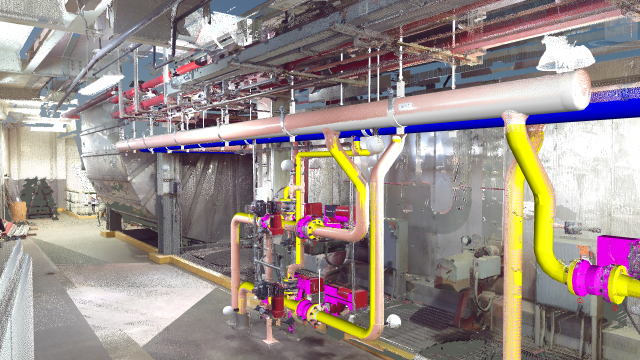
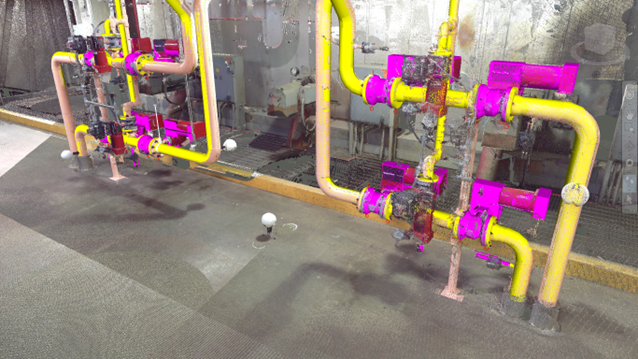
Final Words
Industrial organizations face a major challenge in delivering future facilities that are both economically viable and environmentally sustainable. Unified digital twin technologies hosted in the cloud are the proven route to achieving these imperatives – providing the unrivaled insights and connectivity required for efficient, productive, and sustainable industrial plants of the future.
Seek help with aging plant restoration?
Our specialists can help with intelligent 3D models to re-develop with precision & accuracy to expect the best value on investment.
Related Blogs
Related Blogs
Plant Reverse Engineering Services
What is Reverse Engineering? An engineering process implemented for enhancing…
Best 3D Plant Design Softwares for Multi-Disciplinary Engineering
In the modern context, the modeling and analysis of new-age…
